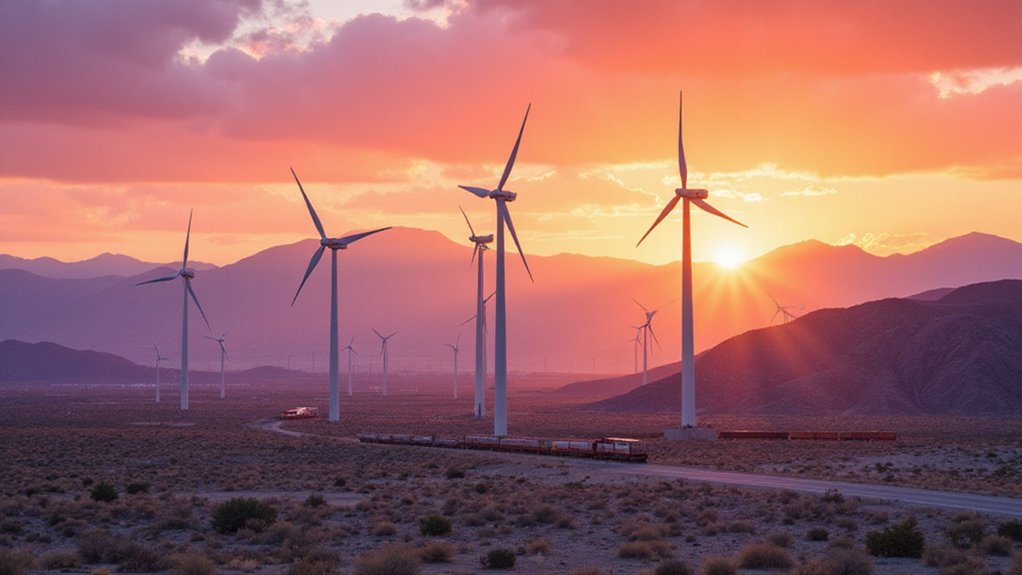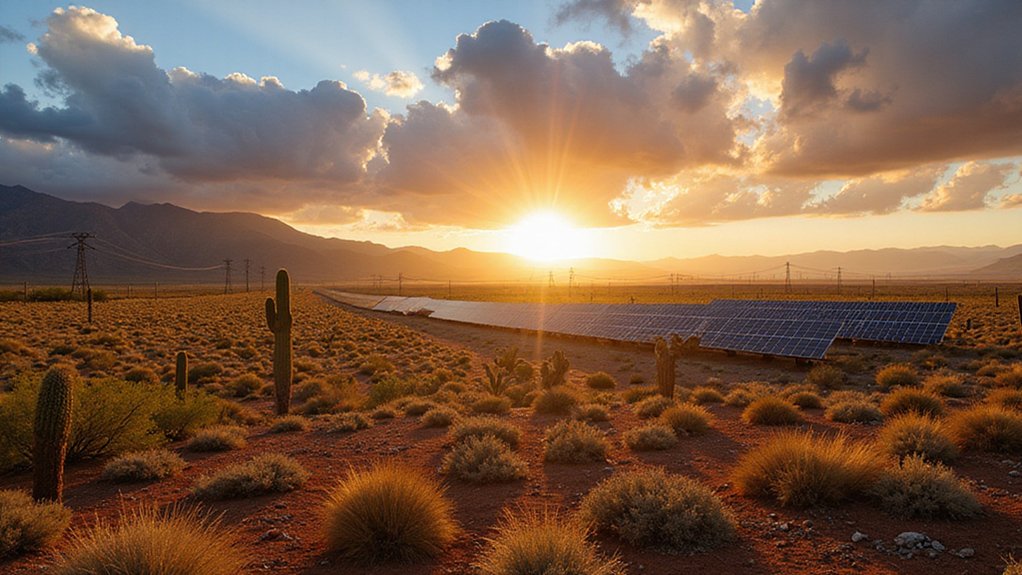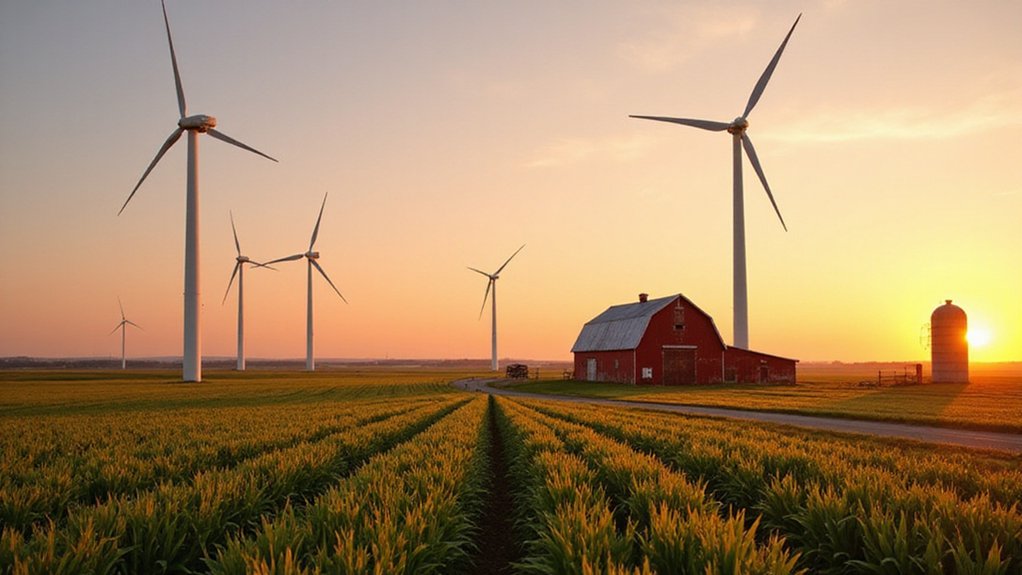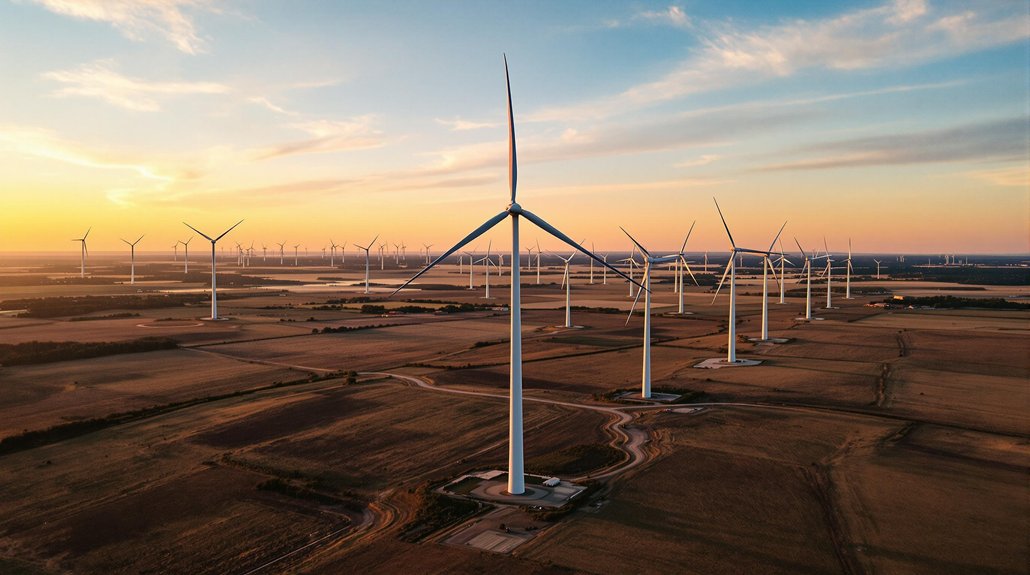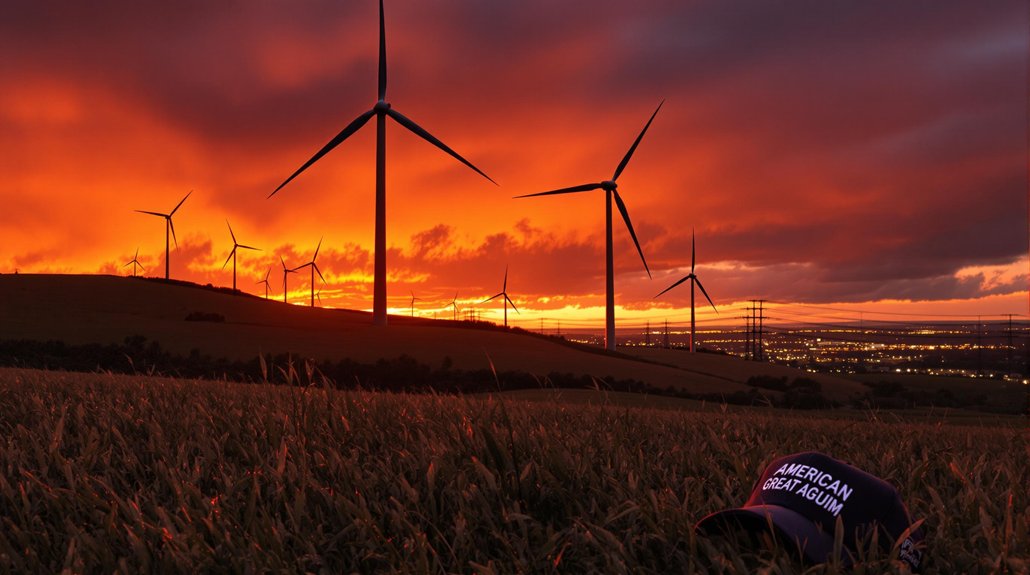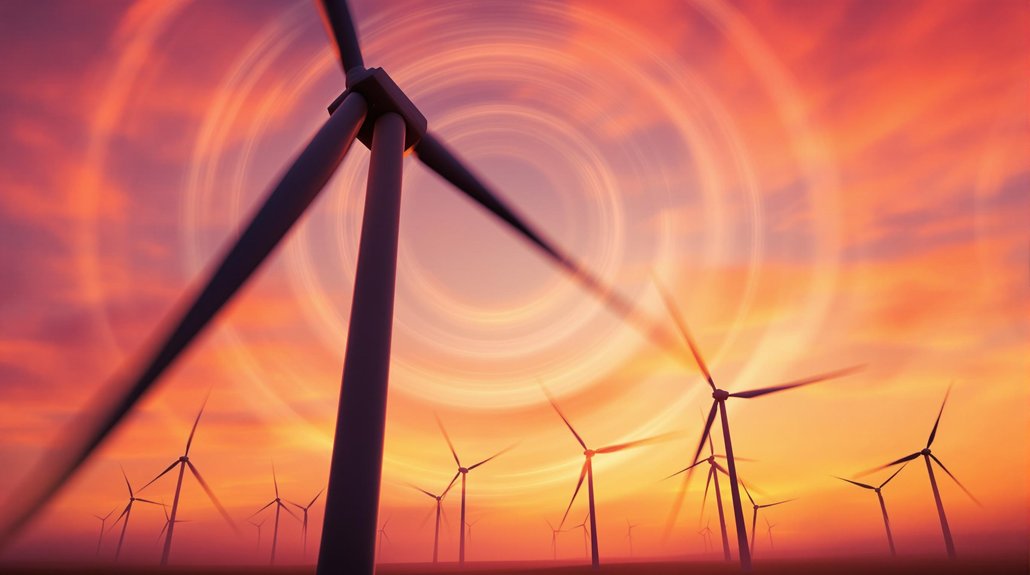Giants of steel and fiberglass, wind turbines have become an iconic part of the Palm Springs scenery. These massive structures dot the San Gorgonio Pass, one of the world’s best wind resource areas. The area’s unique geography, flanked by the San Jacinto Mountains to the south and San Gorgonio Mountains to the north, creates a natural wind tunnel that turbines harness for energy production.
Towering sentinels of renewable energy, transforming natural wind corridors into clean power through ingenious design.
Wind power’s history in the region dates back to 1914 when Desert Power and Water Company installed early turbines. The project failed due to technological limitations and cheaper alternatives. Modern commercial development began in 1982, led by Wintec Energy with installations north of Interstate 10.
The San Gorgonio Pass wind farm has evolved dramatically over decades. At its peak, approximately 5,000 wind machines populated the environment. Today, only about 2,100 operate. This reduction isn’t due to declining interest but rather to technological advancement. Modern turbines produce more power with fewer units.
Early public opinion wasn’t favorable. Many residents and visitors viewed the turbines as eyesores. Critics described them as “rotting” structures that marred the desert vista. This perception has changed considerably over time. This shift in opinion mirrors broader trends, as renewable energy investments now exceed those in fossil fuels globally.
Wind speeds of 15-20 mph regularly flow through the pass, well above the 7-10 mph needed for turbine operation. This consistent wind resource has made the area one of California’s first three major wind farm zones, alongside Altamont and Tehachapi.
The site has served as a testing ground for wind technology. Numerous experimental designs, including the SWT-3 and Alcoa vertical axis turbines, were evaluated here. Many failed prototypes were scrapped and replaced with more advanced models. Engineers discovered through extensive testing that three-bladed designs were most effective for wind power generation. Recent repowering efforts have significantly reduced the total number of turbines while increasing overall capacity.
Today, these once-controversial structures are celebrated symbols of sustainability and technological progress. Guided windmill tours attract curious visitors. The turbines appear in local art and photography, especially dramatic images of freight trains passing through fields of spinning blades.
What began as an “eyesore” has transformed into a beloved Palm Springs landmark.
References
- https://www.spiritofsofia.com/travel-tips/palm-springs-windmill-tour/
- https://en.wikipedia.org/wiki/San_Gorgonio_Pass_wind_farm
- https://www.sfgate.com/travel/article/only-650-windmills-remain-near-palm-springs-20204471.php
- https://www.visitgreaterpalmsprings.com/things-to-do/attractions-and-activities/windmills/
- https://wind-works.org/backstories-of-the-palm-springs-windmills-a-review/
